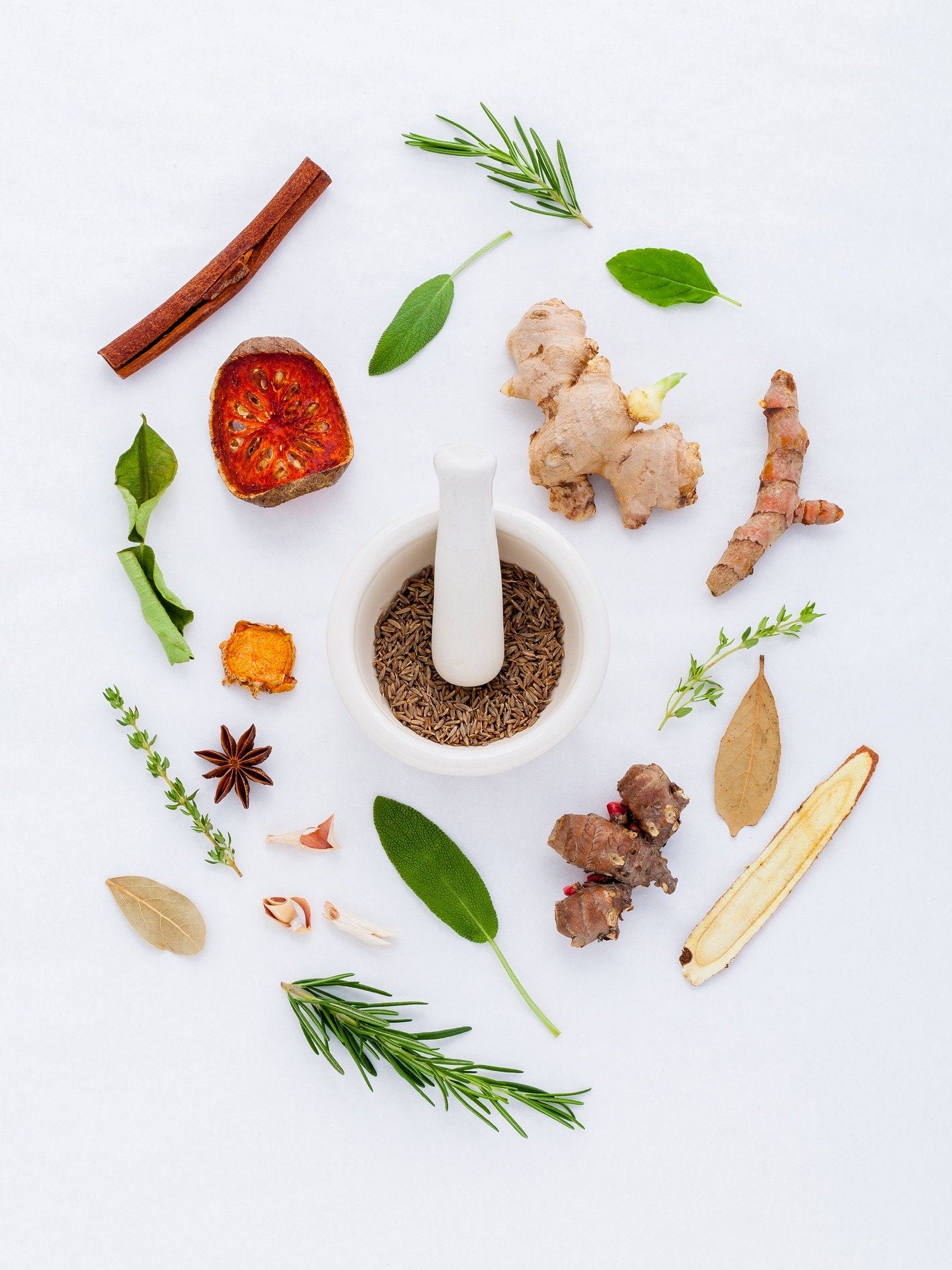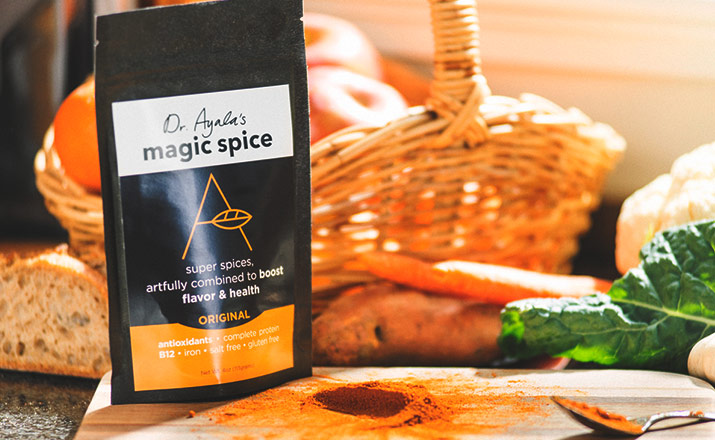
To Fight Inflammation Try Your Spice Rack

Immunity’s on our minds in these crazy Covid-19 times. Inflammation is critical to the immune response to the SARS-CoV-2 virus, but we’re also hearing about exaggerated immune reactions and cytokine storms. We’re learning that an overactive immune reaction can cause severe illness – that can do more damage than the virus itself. Inflammation is both friend and foe.
Inflammation isn’t just at the center of our reaction to infectious diseases though. Chronic low-grade inflammation can happen when we’re not under attack by invaders, recruiting chemicals and cells that damage arteries and build plaque; it’s a likely major mechanism of many chronic diseases including heart disease, cancer, depression, Alzheimer’s, arthritis, and it can age you prematurely.
One of the ways you can help your body mediate inflammation is through your food choices. An anti-inflammatory diet resembles a classic Mediterranean diet – it’s rich in fruits, vegetables, spices and herbs, whole grains, legumes, garlic, onion, olive oil and fish, it’s low in red meat, refined grains, highly processed foods and added sugars. Metabolically healthy people can deal with nutritional indiscretion quite well, but people at risk of metabolic syndrome are already prone to chronic inflammation, and eating a pro-inflammatory meal exacerbates the situation. Unfortunately, metabolic health isn’t common – just 12 percent of US adults are in optimal metabolic health.
So what if you still want that occasional burger with French fries? Can you make it less inflammatory by adding anti-inflammatory foods to the pro-inflammatory ones is the meal?
A pro-inflammatory meal made less so
A new randomized controlled study from Penn State University, published in the Journal of Nutrition, tests this idea.
The study recruited twelve men aged 40-65 years who were overweight or obese, and who had at least one risk factor for heart disease. The participants ate three versions of 1000 calorie meals of coconut chicken curry, a corn muffin, and a cinnamon biscuit for three days and in a random order: one had no spices added, one had two grams of the spices mix, and the third meal had 6 grams, amounting to 1-2 teaspoons of the blend. Blood was drawn before the meal, and hourly in the 4 hours after the meal, and tested for inflammatory cytokines. (Cytokines mediate our immune reactions, recruiting inflammatory cells, stimulating the movement of cells towards sites of inflammation, and changing the behavior of blood vessels.)
The spices blend contained basil, bay leaf, black pepper, cinnamon, coriander, cumin, ginger, oregano, parsley, red pepper, rosemary, thyme, and turmeric.
White blood cells were also cultured and stimulated to respond to an inflammatory stimulus, resembling what could happen if the body’s attacked by a pathogen such as a virus.
And the results: Inflammatory cytokines were significantly reduced with the addition of 6 grams of herbs and spices.
This is a small study, but the antioxidant and anti-inflammatory activities of certain spices and herbs have been shown before, for instance: A study of turmeric in adults with obesity reduced the cytokines IL-1β and IL-4, and ginger has been shown to reduce circulating inflammatory markers in people with type 2 diabetes.
Additional studies will help test this hypothesis. But we already have excellent reasons to add spices to our food: they add flavor (without adding calories, sugar, fat and salt), make food interesting, and transport us to faraway places – at least in our mind.
Dr. Ayala
In Same Category
- Diet affects vulnerability to Covid-19
- To Fight Inflammation Try Your Spice Rack
- Make Vegetables Sexy
- It Isn’t Meat, but Is It Delivering on Plant-Based?
- Activating Brown Fat – and Your Metabolism – with Turmeric, Coffee and Other Goodies
- Here's Why You Need to Cook More
- Top Healthy Food Trends for 2019
- An Easy, Proven Trick for Eating Healthier
- 12 Delicious Cooking Tips That Will Set You Free From The Salt Trap
- Smart Eating for a Successful School Year
- Fitness, Mindfulness and Healthy Eating – There’s an App for That
- Sustainable Summer: Greening your BBQ
- How to Eat Healthy in College and Avoid Weight Gain on Cafeteria Food
- Want Kids to Eat More Veggies? Season Them Up!
- All You Ever Wanted to Know About Nutritional Yeast and Its Health Benefits
- Falling in Love with Kickstarter
- Fighting Inflammation with Spices
- 3 Things Plant-Based Eaters Should Watch For
- Turmeric Absorption and Tips to Enhance Its Activity
- BEFORE & AFTER: Roasted Sweet Potatoes
- BEFORE & AFTER: Baked Potato Wedges
- BEFORE & AFTER: Roasted Cauliflower
Related by Tags
- To Fight Inflammation Try Your Spice Rack
- Smart Eating for a Successful School Year
- Want Kids to Eat More Veggies? Season Them Up!
- All You Ever Wanted to Know About Nutritional Yeast and Its Health Benefits
- Fighting Inflammation with Spices
- 3 Things Plant-Based Eaters Should Watch For
- Turmeric Absorption and Tips to Enhance Its Activity
